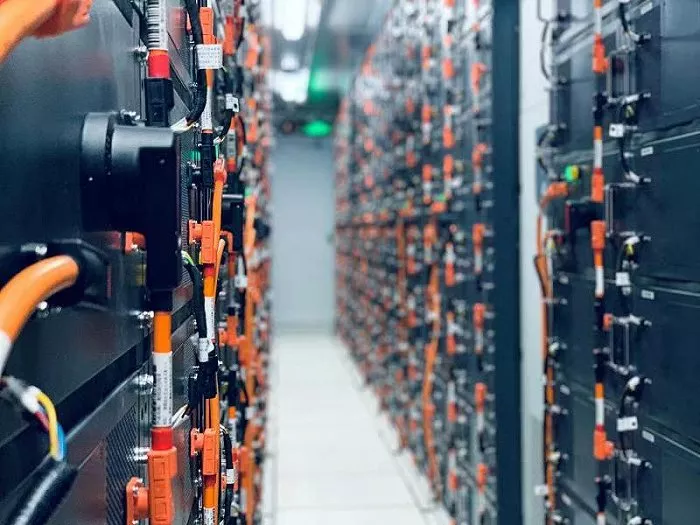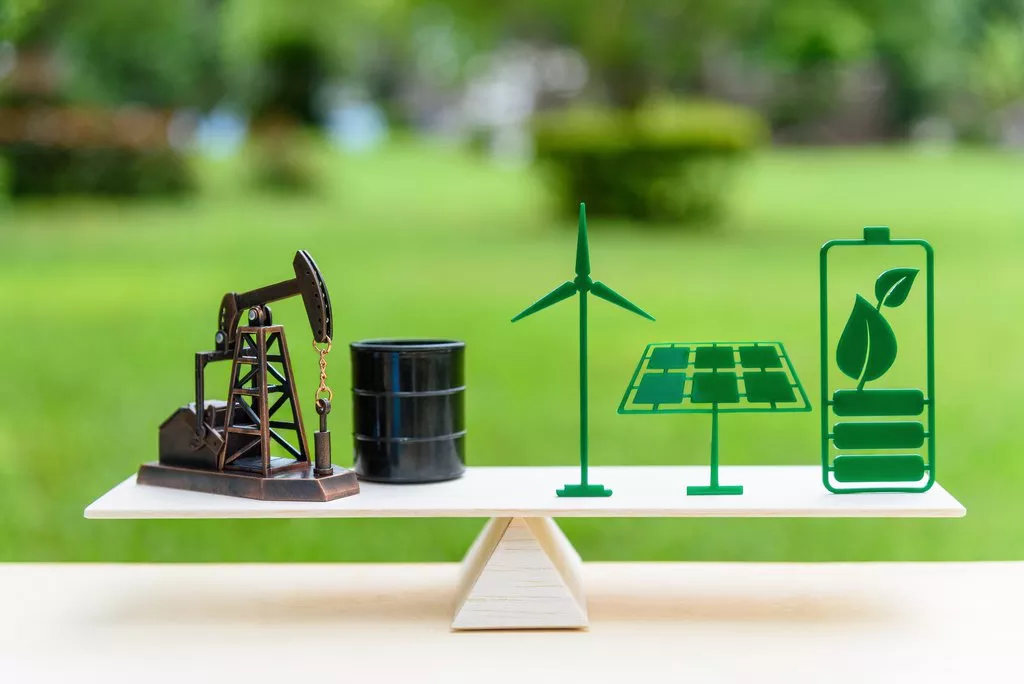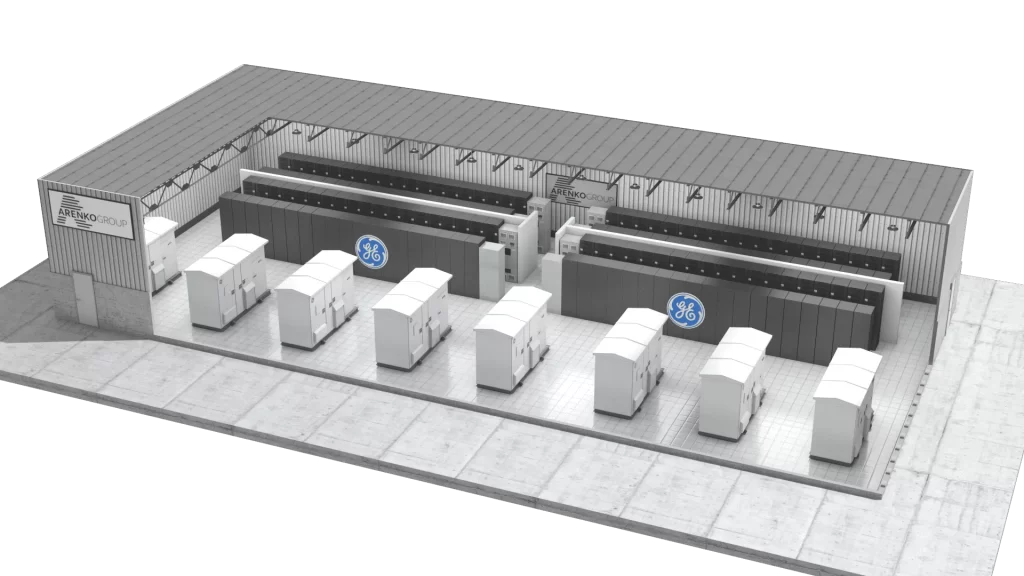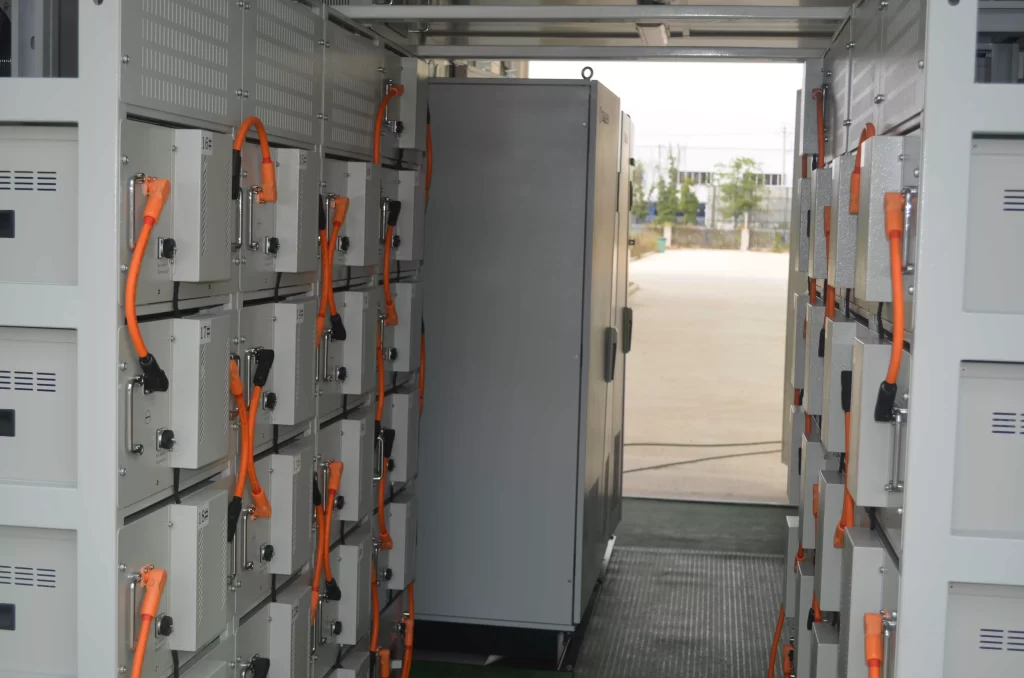Connection technology for energy storage systems
Energy storage: The key to sector coupling
Electrical energy storage devices play a crucial role in the implementation of sector coupling. Rely on innovative connection technology from RJCNE for your energy storage solution.

Connection technology for battery racks
Each level of an energy storage system places different requirements on the
electrical connection technology for signals, data, and power. The comprehensive portfolio for device and field wiring from RJCNE covers these requirements.
One subsection of the potential requirements is the insulation capability or the resistance to mechanical, thermal, and chemical influences. Others include the bending radii of the conductors or, for example, the number of cores and approvals. The following two application examples for battery module wiring and for battery rack connection illustrate the versatility of device and field wiring.

We are therefore the ideal partner
- As a company empowering a CO2-neutral world, we support you with leading solutions for sector coupling
- Implement your individual contacting solutions for battery storage systems and Power-to-X applications
- Take advantage of reliable connection technology for safe and space-saving wiring of your energy storage
- Identify optimization potential through professional consultation with our experts for energy storage applications
Our connection technology portfolio for energy storage
Energy storage systems are made up of different components that all contribute to the functionality of the overall system. Benefit from our connectors that showcase our innovative capabilities. Get power transmission solutions from a single source and integrate them into your application.
Energy storage: The key to sector coupling
Contact RJCNE to learn what matters when designing and producing connectors. Issues covered include materials, voltage, current, waterproofing, etc., improving power safety, and selecting the appropriate connection technology.

Products
Connectors for battery poles and the busbar connection
Busbar connectors and battery pole connectors can be used quickly, safely, and economically in energy storage systems for applications up to 1,500 V. Benefit from the advantages of both connection technologies for front or rear connections.

Battery-pole connectors
Device and cable connectors that are protected against polarity reversal are ideal for use in energy storage systems.
Solutions for reliable electrical connections in battery and Power-to-X systems

Home storage, industrial storage, and large-scale storage as the links for sector coupling
Energy storage devices compensate fluctuations in renewable energy, thus guaranteeing a stable energy supply. For a huge range of applications, energy storage devices must operate safely, reliably, and efficiently. Resilient and durable electrical connection technology is necessary to satisfy these requirements.
Questions and answers about energy storage systems
The answers to a large number of questions are already available. Just take a look at our FAQs. If the corresponding answer is not included, feel free to contact us.
Energy storage systems are used in a huge range of applications – for example, for providing electricity in the event of grid outages. Energy storage systems have an important role to play in the energy revolution, especially with the increased use of renewable energies. This is because renewables are not available at all times to meet demand. The supply of and demand for electrical energy are quite often out of sync. Energy storage systems can bring synchronization to this equation by storing excess electricity produced by solar power and wind power systems. Whenever the demand for energy from the grid is higher than that available, the energy storage systems can make this excess electricity available again.
Despite occasional reports of fires or other accidents involving battery energy storage systems, the answer to this question can be answered with a no. State-of-the-art battery energy storage systems are produced by the manufacturers in accordance with applicable directives and standards, and are installed and commissioned by specialists. That said, battery energy storage systems are also to be considered as devices and plants with a very high energy content. Dangerous conditions can arise in the event of unauthorized access, willful destruction, or circumvention of the safety measures and equipment. However, the manufacturers themselves take such scenarios into account with failure mode and effects analyses.
As is the case with most technical devices and systems, battery energy storage systems should also be checked and serviced regularly. Depending on the storage media used, this maintenance work can be reduced significantly to just visual inspections, the tight fit of screw connections, and so on – as is the case with common lithium-ion batteries. With other systems, however, the amount of work can also be higher, for example in lead-acid batteries, where the electrolyte has to be checked and topped up regularly.
The RJCNE battery-pole connectors can be plugged in and pulled out in any orientation. Moreover, they can be rotated through 360° when plugged in. This makes maintenance and troubleshooting so much easier. Moreover, it increases flexibility when designing the system.
Unintentional polarity reversal of the battery connection can lead to enormous damage and, in the worst case, to danger to life and limb. Therefore, the RJCNE battery-pole connectors are color-coded and mechanically coded. The plus pole only fits into the plus position, and negative only into the negative. Moreover, it is also ensured that the two polarities cannot be short-circuited. This is because if this were the case, the high energy content of the battery would cause the conductors to melt and, with a high degree of probability, lead to a fire in the system.